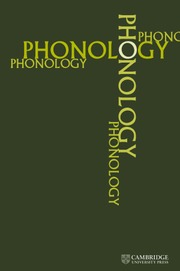Article contents
The interface between phonology and other components of grammar: the case of Hungarian
Published online by Cambridge University Press: 13 February 2020
Extract
When a phonological rule applies across words, it is necessary to be able to specify across which types of words it may apply and across which it may not, or in other words, within which domain it applies. That such domains do not necessarily coincide with syntactic constituents has been amply demonstrated in such works as Clements (1978), Napoli & Nespor (1979), Rotenberg (1978), Selkirk (1978, 1984), Nespor & Vogel (1982, 1986) and Kaisse (1985). As has been argued in recent work, what is needed instead is a somewhat more complex theory in which there is a more complex type of interaction between phonological rules and syntactic structures. In the past few years, several such theories have been proposed, in particular, those advanced by Selkirk (1984), Kaisse (1985) and Nespor & Vogel (1986).
Information
- Type
- Research Article
- Information
- Copyright
- Copyright © Cambridge University Press 1987
Footnotes
We would like to thank László Kálmán, Ádám Nádasdy and Péter Siptár for patiently helping us with the data, and László Varga for his insightful comments on an earlier version of this paper. We also thank the Phonology Yearbook readers and Marina Nespor for their helpful comments.
References
- 16
- Cited by

